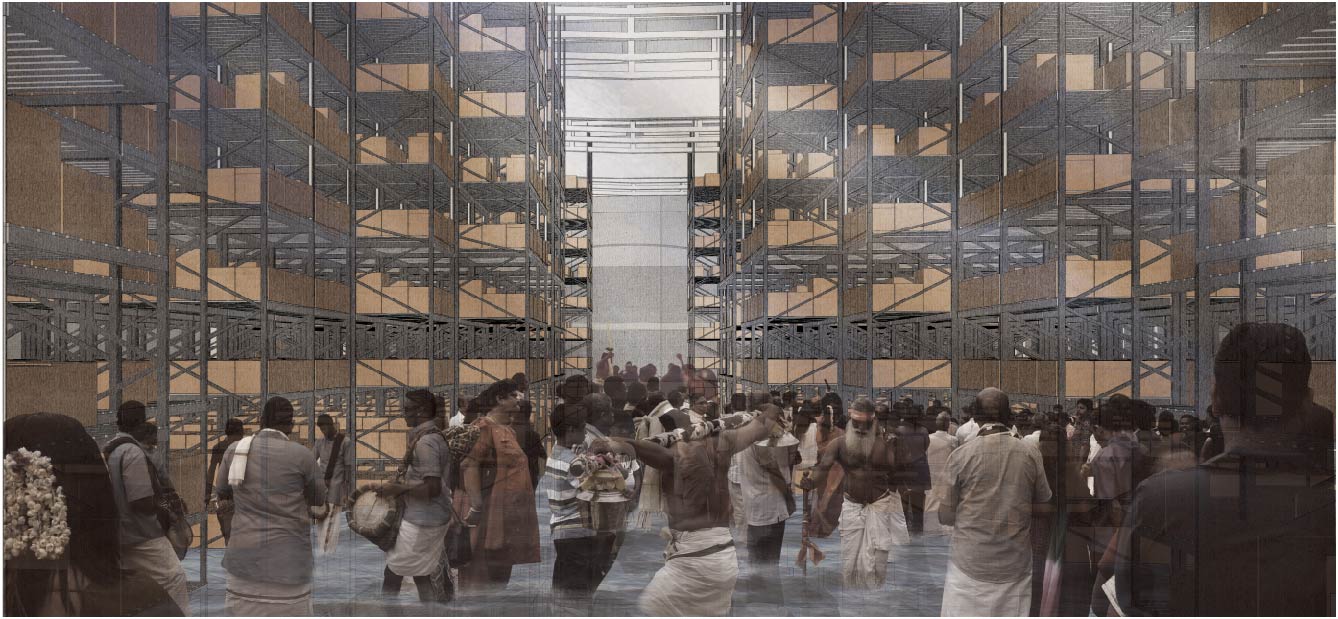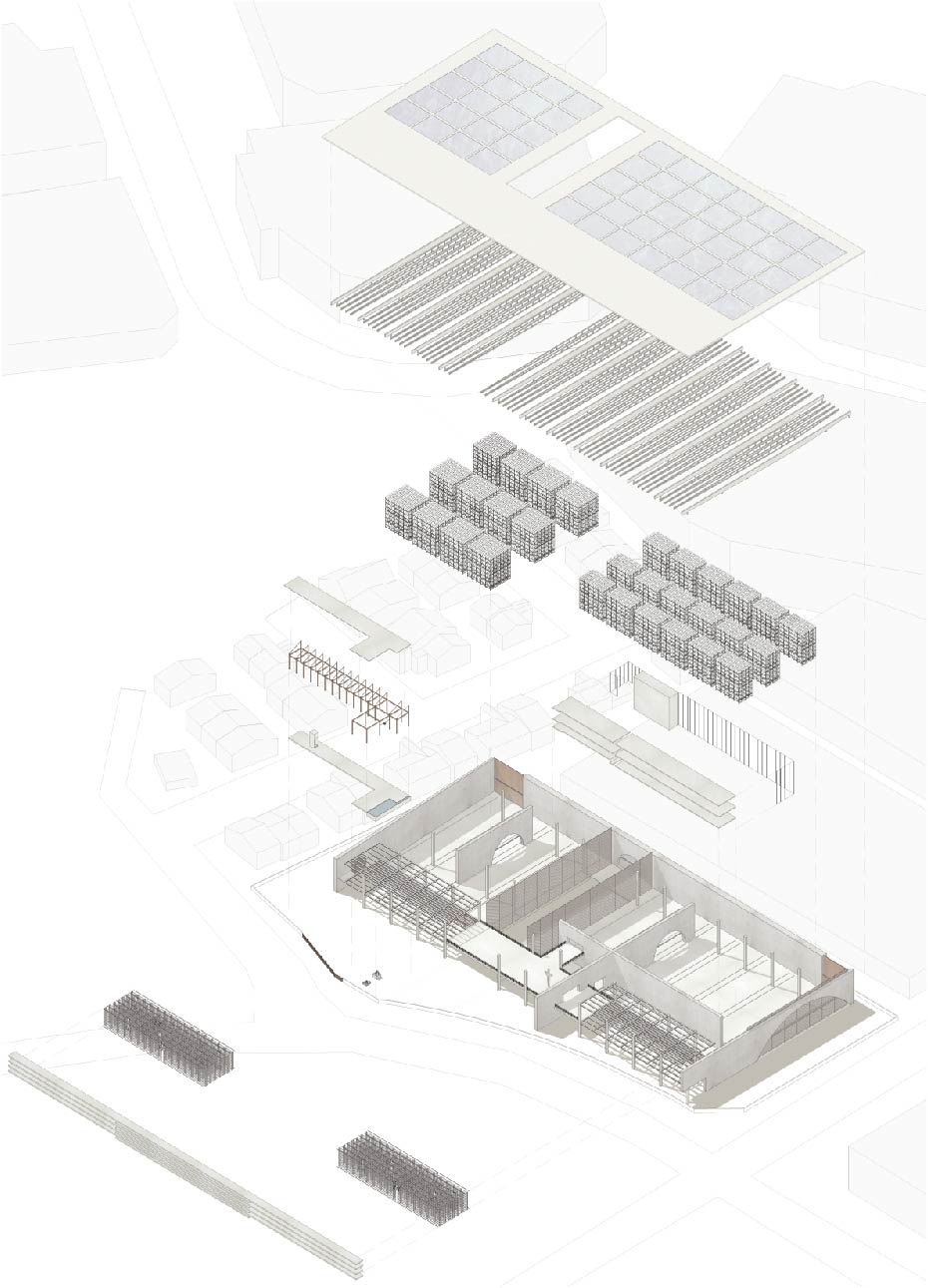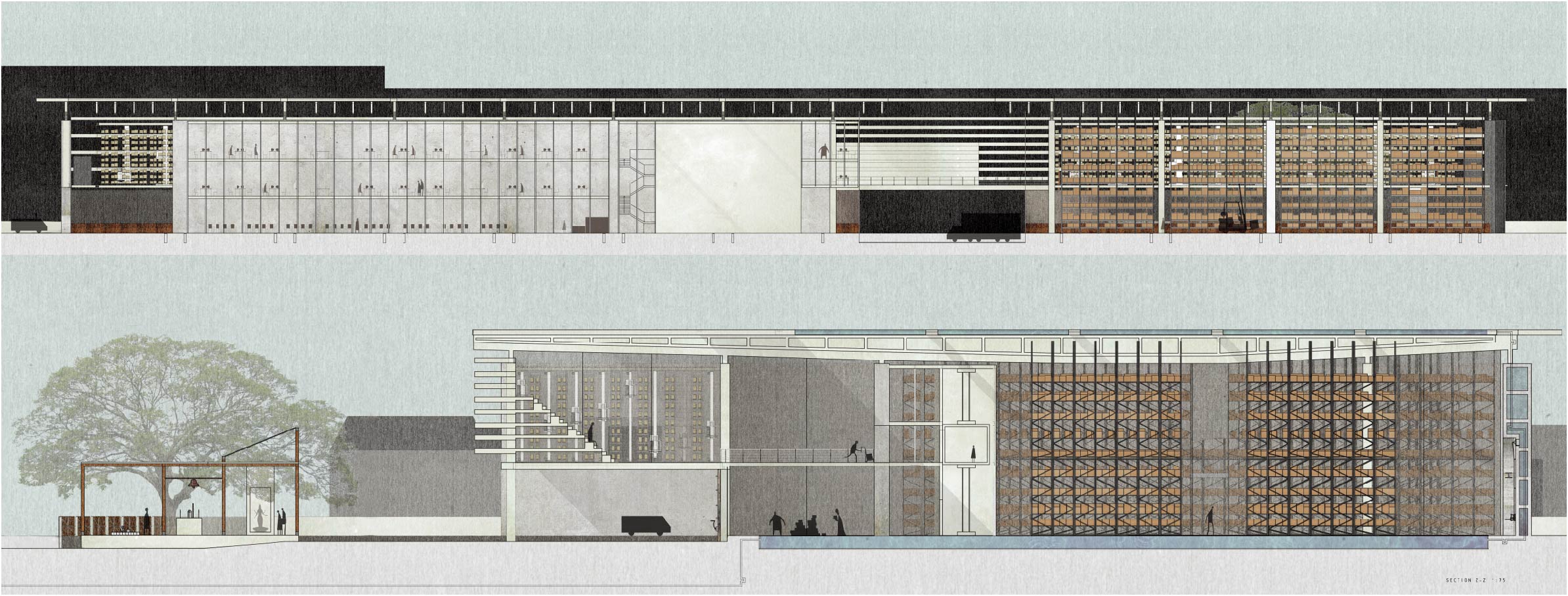




A Religious Economy
新加坡 / singapore
詩理‧莎拉瓦能 / Srisaravanan Subramaniam
印度教廟宇 Sri Marathadi Muneeswaran 建
於1940 年代.被拆除前有60 多年歷史。其
原址由一民間公司承租,這間公司迎回原廟中
神祇,並搭建了一座神龕。
隨著信眾人數日增,本案嘗試可否藉由建築手
段使神龕的宗教活動合乎法規,並更加順暢運
作。神龕的擴建,不應使倉儲空間受到壓迫
但廟宇的發展性也不能犧牲。兩個建築體儘管
對比強烈,最後仍依循新加坡這個城市國家慣
有的全球資本主義邏輯.整合社會與經濟等多
方因素,找到和解共存的模式。本案空間可
容納倉庫作業,同時又可轉換為宗教場所,交
替使用使空間利用達到最大效益。倉庫會定期
清空(利用活動式儲物架)好舉行聖禮(以雨
水收集系統所儲存的水淹過)。結構牆發揮引
導雨水進入廟宇的作用,並有助於維持信眾隊
伍的秩序。
設計不只探索創造傳統的印度教廟宇空間,也
在於其潛藏的宗教寓意,使世俗、非神聖與日
常生活中的物品不再平凡。不同尺寸的盒子令
人聯想到古老印度廟宇所使用的階梯式組合風
格。光、空氣、水等自然元素則經過巧妙的規
劃組織,除了便利於倉庫運作外,在宗教儀式
進行中也兼具了強化超現實感的功效。
The Sri Marathadi Muneeswaran Temple was established in the 1940s for
Hindus in Singapore, and occupied its site for more than 60 years before it was
demolished. The government body in charge of industrial development did
not allow it to remain or to transfer to a new location. Subsequently, the actual
site was leased out to a private company which invited the temple guardians
back to reoccupy a small portion of the land, but in the form of a shrine.
With the enlargement of its congregation, this project explores how the
shrine’s practices can be legitimized and facilitated through architectural
responses. In formulating a strategy to provide space for the temple to
grow beyond a shrine, the present relationships had to be considered. The
temple and the warehouse must not compromise one another, and the two
contrasting programmes were reconciled through a confluence of social and
economic factors, adhering to the global/capitalist logic of the city-state.
The project created a space that accommodated the operations of warehouse
while allowing for ritual transformations to facilitate religious expression. The
alterations to the existing warehouse allow it to maximize its efficiency. At
periodic intervals, space will be cleared (through moveable storage racks) and
consecrated (flooding from rainwater collection system) to create a festive
space. Structural walls act as markers to channel the water into the space and
order the procession.
Design explorations focused not only on crafting space as conventionally
regarded in a Hindu temples but also the latent sacred connotations that
transformed profane, mundane, everyday objects. Boxes of differing sizes
evoke the scalar compositions of old Indian temples. Natural elements such
as light, air and water were curated to aid in the operations of the warehouse
while also amplifying the surreal quality of the processional environment.
More Projects of this Session
展區其他作品